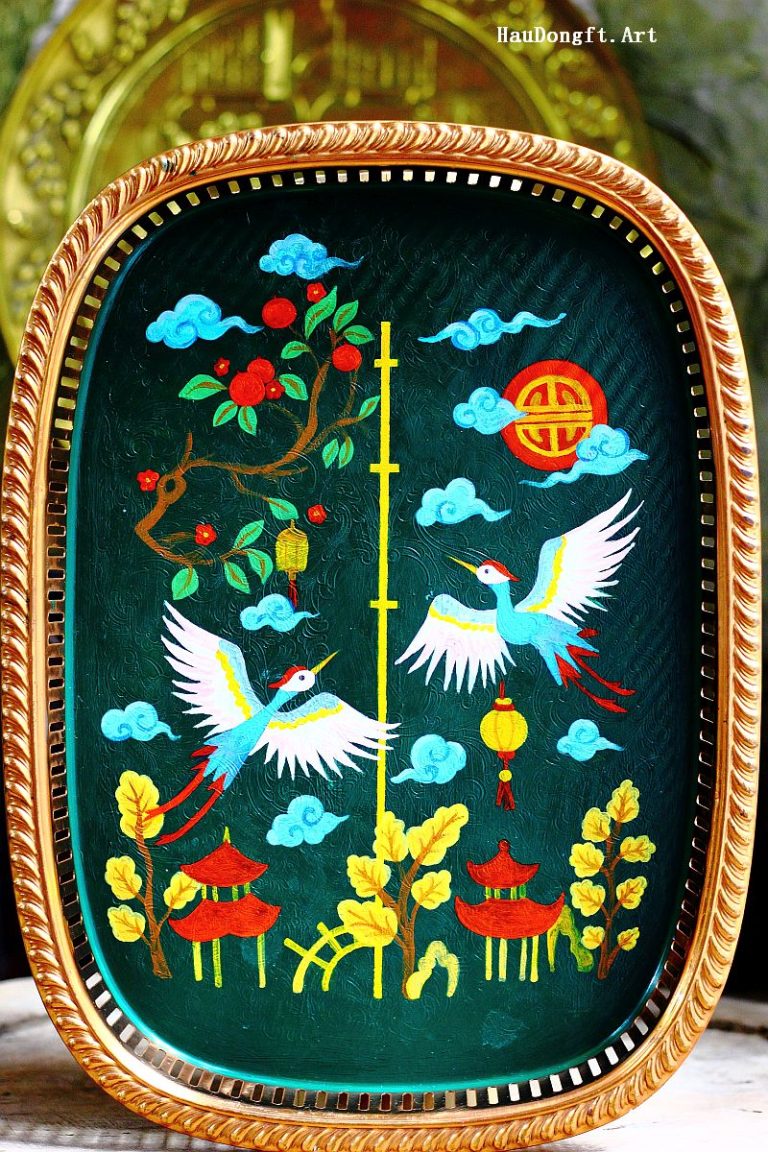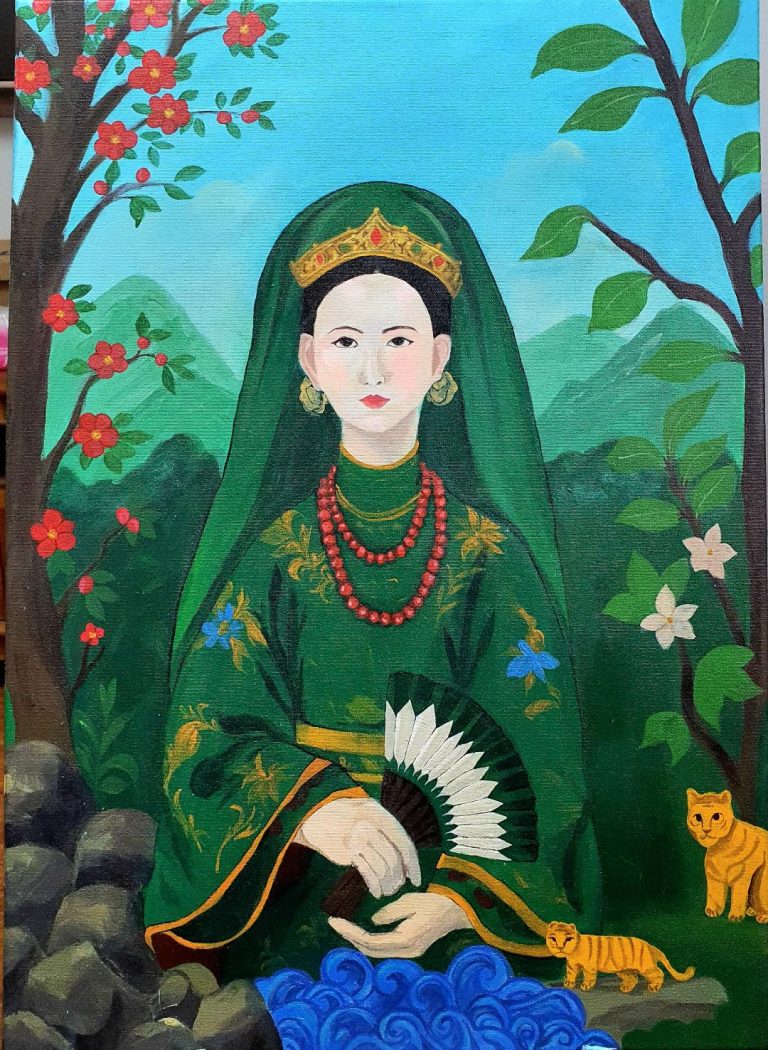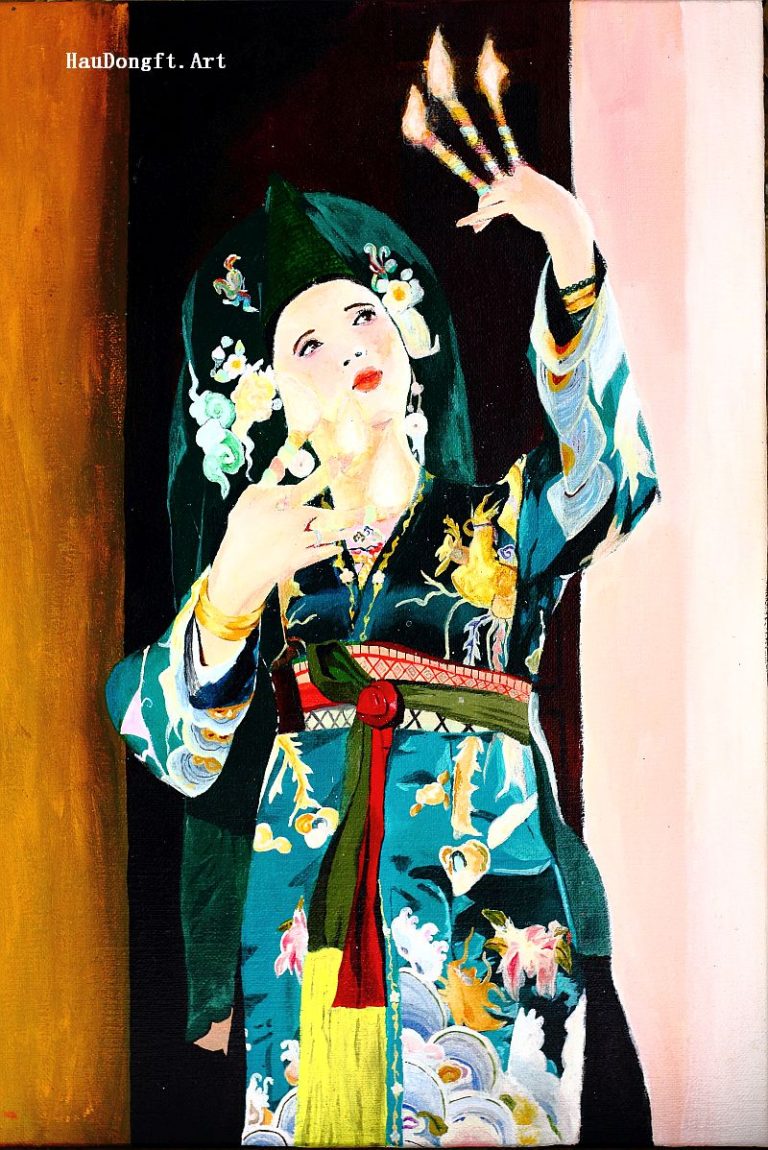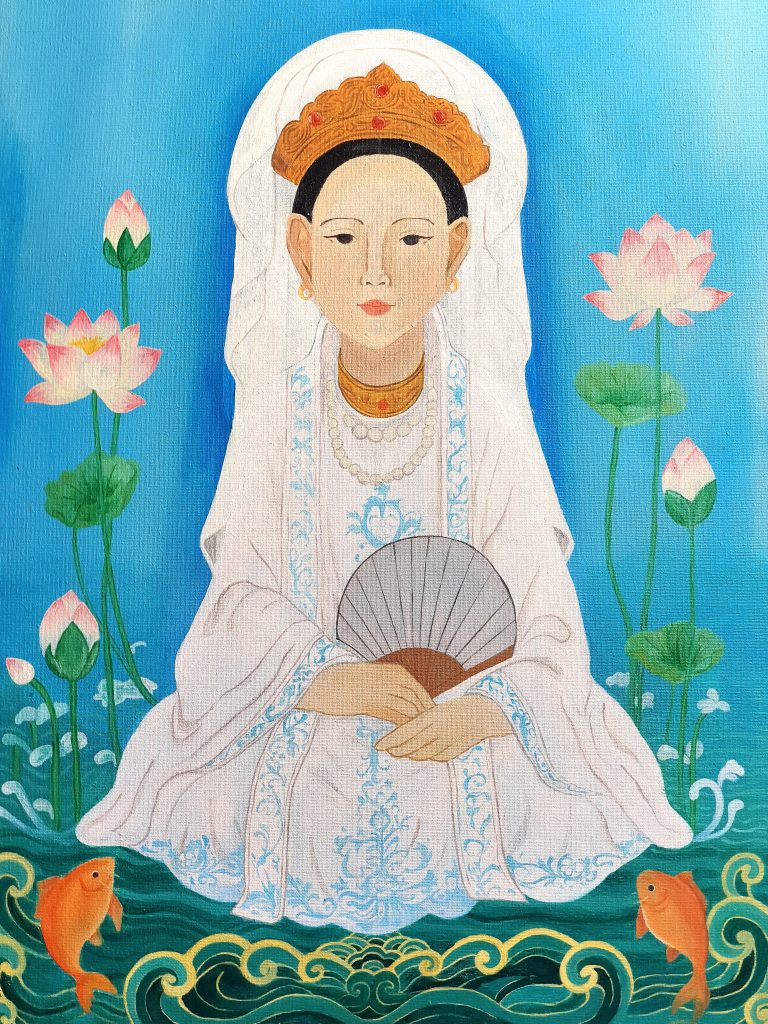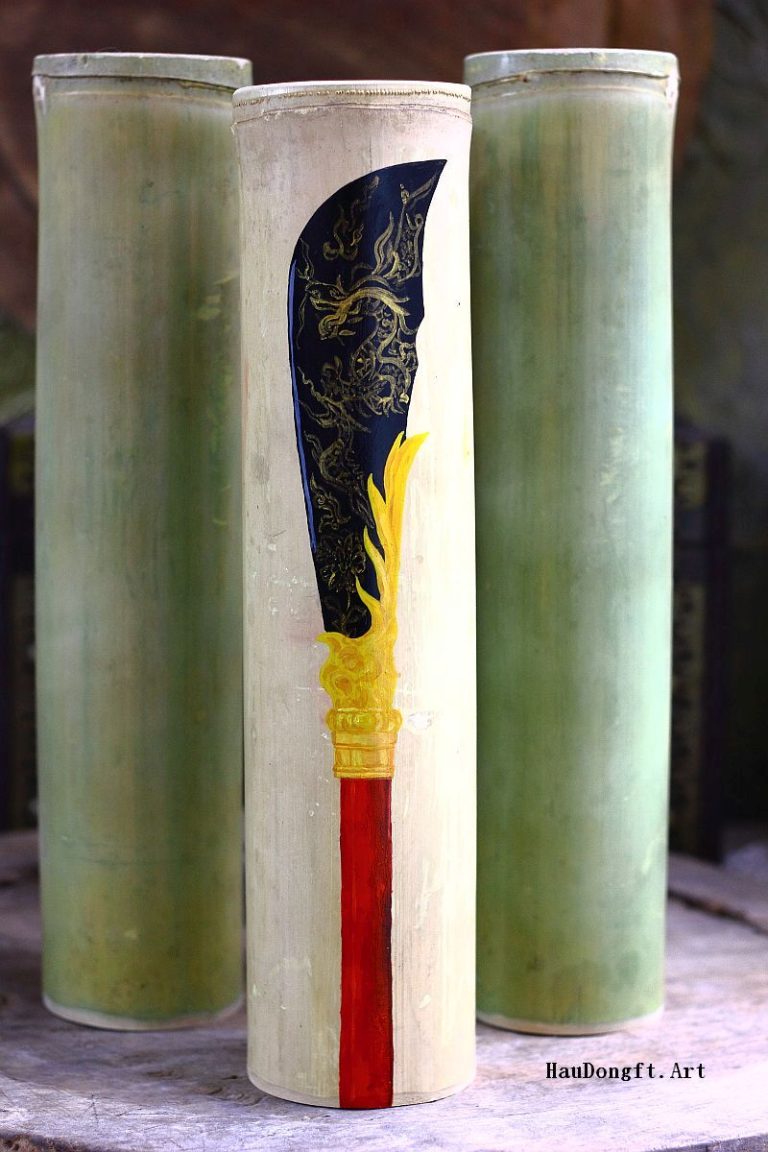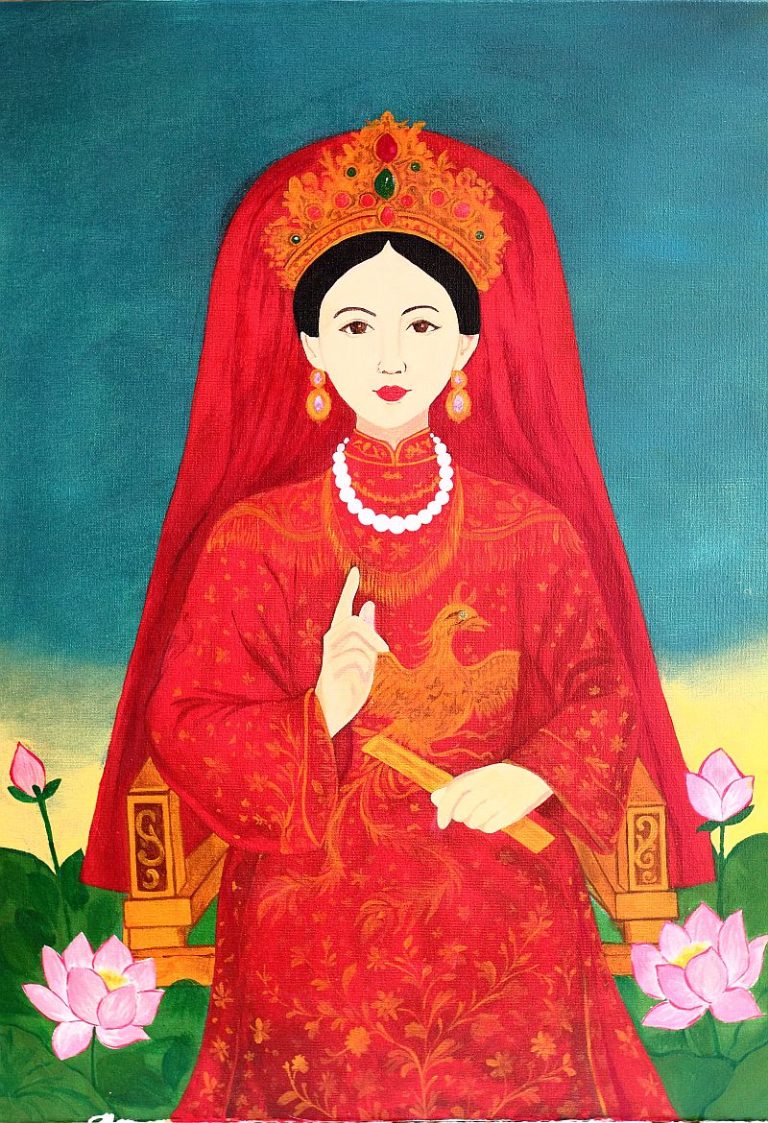Hát Chầu Văn originated in the Red River Delta of Northern Vietnam. According to Professor Ngô Đức Thịnh – Member of the National Council for Cultural Heritage – the most prosperous period of the Chầu Văn ritual was from the late 19th century to the early 20th century. By employing spiritual music with polished and solemn lyrics, hát văn is regarded as a form of singing dedicated to serving the deities (also known as part of the Mother Goddess belief – the Tứ phủ religion).
Hát Chầu Văn embodies the lofty human aspiration toward the sacred and the beautiful, which is its noblest and most refined essence. The spiritual element in hát văn is reflected in many aspects: sacred space, family life, individual experience, community ties, funerals, weddings, and more. According to musician Thao Giang – Deputy Director of the Center for the Development of Vietnamese Music Arts – what we see is the tangible, but the intangible lies deep in our souls: remembrance of ancestors, grandparents, and the spiritual roots that shape us. All of these become cultural beauty and are expressed through hát Chầu Văn.
Chầu Văn encompasses all forms of art: music, literature, performance, costume, and dance. Through the Chầu Văn ritual, people worship the Mother Goddess, the Mother Religion, the Rice God, the Moon God, and other deities—symbolizing freshness, purity, fertility, and growth. In Vietnamese Chầu Văn ceremonies, expressive forms, dance movements, music, and song lyrics all bear historical imprints, recounting legends and praising the virtues of heroes who contributed to the people and the nation.
In terms of cultural value, the Chầu Văn ritual is an indigenous belief system that integrates various forms of folk culture: musical language, oral knowledge, singing, dancing, traditional crafts, costumes, decorative arts, architecture, and cuisine. These are unified into an organic whole in which the “theatrical” element is closely intertwined with spirituality, reflecting the community’s worldview and perception of nature and society. This belief both preserves traditional values such as “uống nước nhớ nguồn” (when drinking water, remember its source), and is continuously recreated by the community, incorporating new cultural values to adapt to modern life. Therefore, it exerts a strong appeal, especially to followers of the Tam phủ and Tứ phủ belief systems.
Hát Chầu Văn has many forms, including: sacred worship singing (hát thờ), temple singing (hát cửa đền), ritual possession singing (hát hầu), and competitive singing (hát thi). The rhythm and tempo can vary from slow to medium to fast. Alongside melodies with clear rhythmic structures and the bright folk character of Northern Delta tunes such as bồng mạc, sa mạc, cò lả, influences of Ca trù are also evident in melodic structures, with tunes like bỉ, phú nói, phú bình, phú chênh, and phú tỳ bà.
Traditional musical instruments commonly used in Chầu Văn rituals include:
Đàn Nguyệt (Moon Lute): A plucked string instrument of the Vietnamese people, also called đàn kìm, vọng nguyệt cầm, or quân tử cầm. Its round soundboard resembles the full moon, hence the name đàn nguyệt. It features unique techniques such as bending, sliding, and tremolo, suitable for both solo and ensemble performance. It is widely used across Vietnam and resonates well with the Vietnamese language. Unlike the Chinese moon lute, the Vietnamese đàn nguyệt has a longer neck and higher frets. Originally with 8 frets, it was later expanded to 10, tuned in the pentatonic scale.
Trống Ban (Ban Drum): Also called trống con (little drum), this is a Vietnamese-made membranophone. It is small, double-headed, with a diameter of about 26 cm.
Phách (Clappers): A Vietnamese idiophonic percussion instrument. There are various types of phách used in singing, dancing, and music.
Tiu Cảnh (Small Cymbals): A Vietnamese idiophone made of two small brass cymbals, each about 10 cm in diameter, one with a higher rim and one lower, producing contrasting high and low pitches with clear, ringing tones.
Thanh La (Flat Gong): A circular idiophone made of bronze alloy with lead. Similar in appearance to gongs but without a knob, slightly convex, with rims, and unpitched. They come in various sizes (15–25 cm diameter). The beater is usually wood or bamboo.
Other instruments include:
Trống Cái (Great Drum): A large two-headed drum crafted from wood, with heads made of buffalo or cowhide, 40–100 cm in diameter, and about 50 cm in height, often with hooks for hanging.
Sáo (Bamboo Flute): A wind instrument made of bamboo or aged reed, with an oval-shaped mouth hole, widely used in Vietnam.
Đàn Tranh (Zither): A plucked string zither without a neck, popular in Vietnam and some Asian countries. It is believed to have been introduced from China (originally called zeng) and integrated into Vietnamese traditional music.
Đàn Nhị (Two-string Fiddle): A bowed string instrument, also known as đàn cò, present in Vietnam for thousands of years. It is widely used among the Vietnamese and many ethnic minorities such as the Mường, Tày, Thái, Giẻ Triêng, and Khmer.
